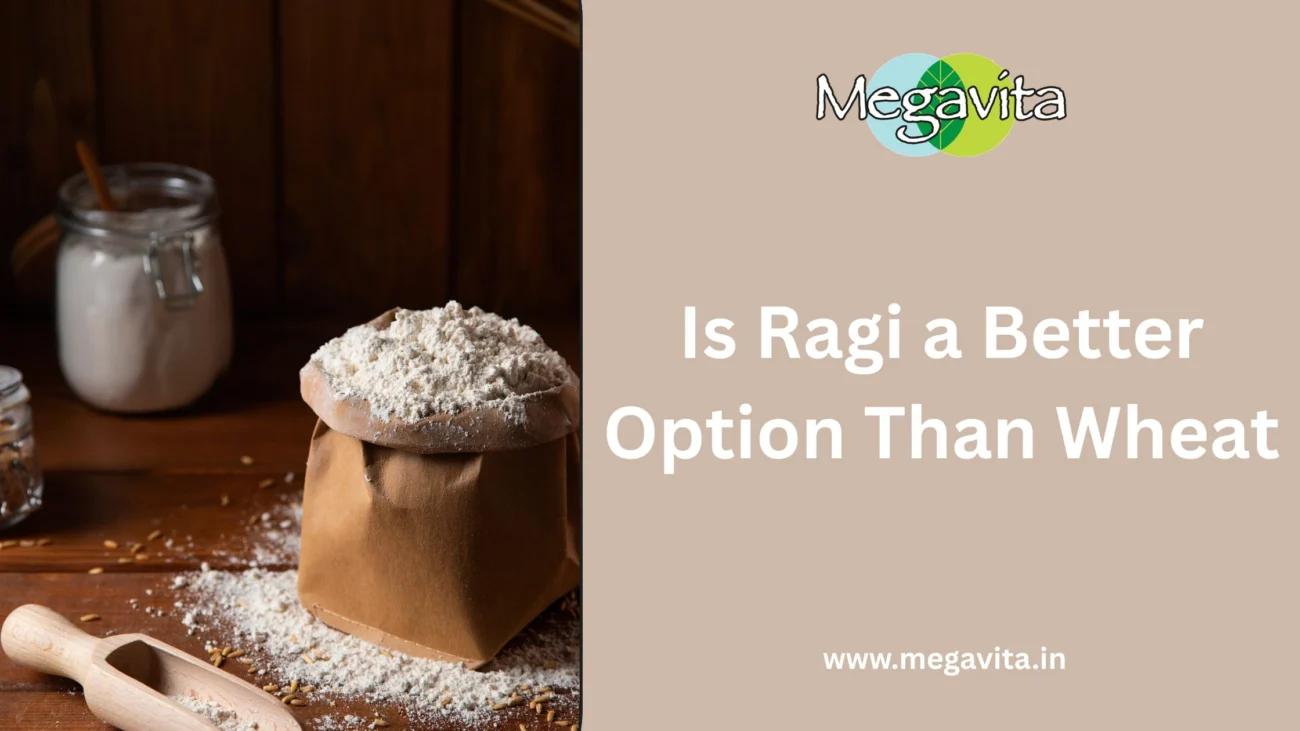
Wheat used to be the grain utilized in the preparation of chapatis, porridge, and other conventional foods at home in Indian families. Due to a spike in lifestyle diseases and growing interest in conventional cereals that are rich in nutritional value, ragi or finger millet is becoming popular again. The conventional grain which used to be part of orthodox South Indian family a few years ago is now being viewed as a super grain with unshakeable nutritive value.
The age-old question on all our minds today: Is ragi really the healthier alternative to wheat? In this blog, we look at how they stack up against each other, what nutrients they have, the benefits, and why finger millet ragi flour—in its organic ragi flour state, by the way—is destined to be the smart, healthier choice for families today.
What Is Ragi?
Finger millet or ragi is one of the millets to be sown earliest and has largely been in Africa and South India. Ragi does not have gluten in it as wheat does. It undergoes the process of becoming finger millet ragi flour, and after this, the flour is used to prepare different foods such as ragi malt, porridge, and ragi dosa and chapatis.
The increasing demand for organic finger millet flour is proof of people opting for chemical-free, conventionally made food that is wholesome and ecologically friendly.
Ragi vs. Wheat: Nutritional Comparison
Let us have a straightforward comparison between ragi and wheat according to beneficial nutrients:
| Nutrient (per 100g) | Wheat Flour | Ragi Flour (Finger Millet) |
| Calories | 340 kcal | 336 kcal |
| Carbohydrates | 71g | 72g |
| Protein | 12g | 7g |
| Fat | 1.5g | 1.3g |
| Dietary Fiber | 2g | 11g |
| Calcium | 30 mg | 344 mg |
| Iron | 3.6 mg | 4 mg |
| Gluten Content | Yes | No |
With the above, organic ragi flour can be seen to be better because of its denser calcium, iron, and fiber content. Although wheat might contain more protein, this is not complemented by the dense mineral content ragi boasts of—particularly beneficial to women, children, and the elderly.
Top Reasons Why Ragi Is Better Than Wheat
1. High in Calcium – Good for Bone Health
Ragi is the most natural source of calcium among all the cereals. Finger millet ragi flour has more than 10 times the amount of calcium found in wheat flour for every hundred grams. It is thus a very suitable alternative for:
Growing age children
Pregnant and nursing mothers
Old people with osteoporosis risk
2. Gluten-Free Naturally
Ragi differs from wheat and contains no gluten content within it. It is thus an ideal substitute for individuals with:
Celiac disease
Gluten intolerance
Autoimmune diseases or digestive intolerance
Finger millet flour organic is easily digestible and does not cause bloat, indigestion, or skin problems due to gluten.
3. High in Fiber – Easy to Digest & Lose Pounds
Ragi is high in fiber, i.e., insoluble fiber. It works in the following way:
To make digestion healthy
To avoid constipation
To keep you full for a longer duration (Suppressing hunger pangs)
To help in losing weight and fat burning
This is absent in wheat containing cereal and thus ragi is ideal cereal for a person on diet for losing weight.
4. Controls Blood Sugar – Ideal Grain for Diabetics
Due to low glycaemic index, ragi is slowly digested and also controls blood sugar. To possess organic ragi flour can:
Avoid sugar rush
Improve insulin sensitivity
Reduce Type 2 diabetes risk
Wheat, yet not wheat, has a medium glycemic index and raises blood sugar faster.
5. Antioxidant & Amino Acid Content
Ragi has native antioxidants and polyphenols that combat oxidative stress. Ragi also has essential amino acids such as methionine, present in wheat.
These nutrients:
Enhance the immune system
Reverses cell damage
Optimization of brain functioning
Slower aging
6. Heart Health Benefit
The high magnesium and fiber content in ragi leads to:
Lower cholesterol level
Lower blood pressure
Improved cardiac efficiency
Ragi flour is easily substituted with wheat in a healthy heart diet.
Delicious Wheat Substitutes prepared with Ragi
Ragi is extremely versatile and can replace wheat in nearly any recipe:
Ragi Roti in place of wheat chapati
Ragi Dosa for guilt-free South Indian breakfast
Ragi Malt Drink as children’s and senior citizen’s treat
Ragi Cookies for guilt-free snacking
Ragi Idiyappam & Putu in Kerala cuisine
Make use of organic finger millet flour for the purest, healthiest outcome.
Why Organic Ragi Flour Is the Better Choice
Though ordinary ragi flour is extremely healthy, organic ragi flour is sown without poison or poisonous chemicals. It is less processed and healthier and tastes healthier.
Benefits of organic:
Chemical- and poison-free
Nutritional purity
Environmentally friendly
Child- and old-age-safe
A step-by-step guide to replace wheat with ragi
If you are a beginner to ragi, begin with these simple steps:
Replace one wheat meal daily with ragi (roti, dosa, or malt).
Replace half a cup of whole wheat flour with ragi flour for slow transition.
Experiment with millet breakfast cereals for a high-fiber breakfast.
Your body will slowly get accustomed to it, and you will feel light, energetic, and healthier.
Conclusion: MegaVita – Your Health Partner
As more and more people opt for ancient grains for modern health, finger millet ragi flour has been gaining prominence as a refined, nutrient-rich substitute to wheat. With effects varying from fortified bones to sugar control, natural ragi flour is available for everyone ranging from children to the elderly.
We at MegaVita go back to origins to construct a healthier future. Our hygienically treated, hand-harvested, and nutrient-rich organic finger millet flour brings health and heritage to your table both.Switch to natural care. Opt for MegaVita – The best millet brand in india.

